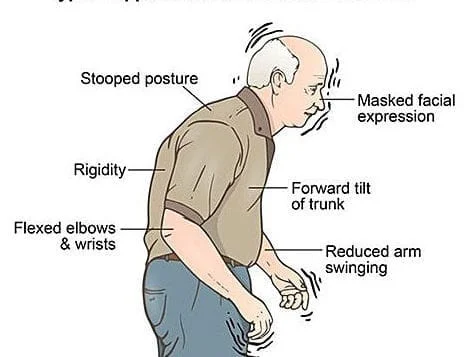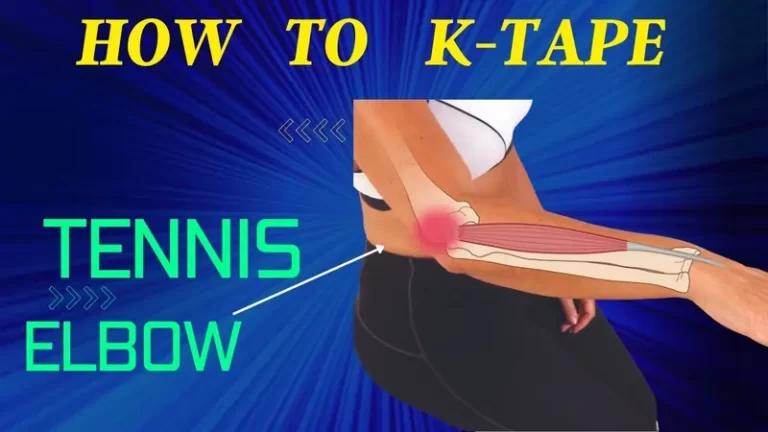Pregnency Joint Pain
Introduction:
Many pregnant mothers suffer from pregnancy joint pain as their bodies go through major hormonal and physical changes. Joints, particularly those in the hips, knees, and lower back, are subjected to increased weight and pressure as the baby grows.
Your body experiences a variety of aches and sensations during pregnancy. Because of this, it’s not unusual to see a lot of us in the popular “hand on lower back” position.
Common areas of joint pain during pregnancy:
Pregnancy causes more joint pain in some parts of your body than others, even though you may feel pain everywhere.
- Hip and sacroiliac joint pain: In order to support and distribute body weight across the pelvis, these joints are essential.
- lower back or lumbar pain.
- knee pain.
- Pubic symphysis/pelvic joint pain: Symphysis pubis dysfunction, a more severe disease, may result from this.
Causes of joint pain during pregnancy:
Growing uterus:
In addition to shifting your center of gravity, the expansion of your uterus weakens and stretches your abdominal muscles.
Furthermore, this change in your center of gravity causes stress and low back pain in a different location than you would have noticed before becoming pregnant.
Gaining weight isn’t limited to the abdomen. Other regions of your body also enlarge as your uterus does.
Pregnancy hormones:
The pregnancy hormones progesterone and relaxin are the main culprits behind joint ligament weakening or pain.
Some joints become less stable as a result, making them feel loose when carrying out daily tasks.
For instance, when your body produces relaxin to broaden the pelvis, you might feel pain in your back. The SI joints become more elastic as a result, which results in pain there.
According to Ruiz, the pelvic girdle can shift to make room for a baby to enter through the birth canal since the pelvic ligaments have softened.
Posture problems:
Your posture will change if you carry more weight in the front of your body. You will observe a shift in the weight distribution around your abdomen as your baby grows.
Taking care of a youngster who still rides on your hip can also lead to postural issues, which can result in lower back and hip joint pain.
Other conditions:
According to Cokes, conditions like pubic symphysis diastasis are less frequent but more worrisome. “This can result in severe pain and trouble walking because the pubic bone separates either during pregnancy or during delivery,” she says.
Relieving joint pain during pregnancy:
The worst pain is in the joints, particularly when pregnant. The good news is that relief can be found in a number of safe ways.
Correct postural dysfunctions:
Addressing postural problems to lessen joint strain and guaranteeing sufficient strength and flexibility around the affected joints.
In addition to correcting your posture, she suggests determining which joints are strained and creating a customized rehabilitation regimen.
Exercise regularly:
Regular exercise during pregnancy can help you maintain your physical fitness, maintain the strength of your muscles, and ease joint pain.
Apply heat to the area:
A heating pad applied to your hips, knees, or lower back (avoid placing heat directly on your pregnant tummy) or a warm bath with Epsom salts can provide some comfort.
Cokes also warns about using a heating pad and getting burned. She prefers to use flannel bags packed with rice that are heated in the microwave because they conform to the area of the body that hurts.
Get a prenatal massage:
Muscle aches caused by joint pain may be lessened by receiving a light prenatal massage. Look for a massage therapist who has received prenatal massage training, if possible.
Consider over-the-counter pain relievers:
To assist in controlling joint pain during pregnancy, your doctor could suggest using an over-the-counter (OTC) medication, such as acetaminophen, for a brief period.
But according to Ruiz, using nonsteroidal anti-inflammatory medicines (NSAIDs) like naproxen or ibuprofen throughout the third trimester can harm your unborn child.
Before taking any over-the-counter medications or drugs while pregnant, always get your doctor’s approval.
Pregnancy-related joint pain prevention exercise advice:
Joint pain can be effectively managed by planning a pregnant workout according to the trimesters and peak levels of relaxin.
First trimester exercise tips:
- Place your feet flat on the floor, hip-width apart, and bend your knees while lying on your back. In order to achieve a neutral position, make sure your back is not forced against the floor and that you are resting on the rear of your pelvis.
- To get ready, take a breath, then release it and do a Kegel.
- Use the Kegel to slightly contract the lower abs. Breathe in and let your pelvic floor and abs relax. Repeat the contraction after exhaling.
Second trimester exercise tips:
One possible cause of pregnancy-related joint pain is the postural changes that take place during pregnancy. According to Jeffcoat, this will become more apparent in the second trimester.
Third trimester exercise tips:
According to Jeffcoat, the emphasis in the third trimester is on maintaining strength and fitness targeted at postpartum objectives as well as enhancing functional strength to help with the demands of motherhood. A key component of this strategy is always core strength. Maintaining an even weight distribution over both feet can help you achieve this.
Treatments to avoid:
Pregnant women may be advised by their doctor to avoid using the following joint pain remedies:
- Some medications: Nonsteroidal anti-inflammatory drugs (NSAIDs), for instance, may pose dangers to the fetus in the third trimester, such as decreasing amniotic fluid and cardiac issues.
- Intensive exercise: Activities that carry a significant risk of injury or falls, such as high-impact, rigorous workouts, should be avoided. During pregnancy, these activities might increase joint pain and present additional hazards.
- Hot tubs and saunas: Due to the possibility of overheating, doctors typically advise against whole-body heat exposure from hot tubs or saunas, especially during the first trimester.
Prevent Joint Pain During Pregnancy?
It can be challenging to determine whether pregnancy-related joint pain can be avoided. However, being active and keeping your muscles strong can help lower your risk because inactive persons are more likely to experience joint and other types of pain during pregnancy. “Your body needs a lot of extra TLC to keep the muscles functioning as they should to stabilize your joints during pregnancy because it is changing so much,” she continues.
Does Joint Pain Stop After Pregnancy?
In the end, this will differ for each individual. Keep in mind that the first 12 weeks after giving birth, or the “fourth trimester,” are when the most significant changes occur; the first six weeks don’t actually matter. However, many people discover that it takes a year or longer to feel “mostly normal” once more. Although there isn’t a set time for the pain to go away, doctors say that remaining active and gradually exercising after giving birth (after your doctor gives the all-clear) will help you heal more quickly.
Conclusion:
Pregnant women frequently endure joint pain. It could be caused by the body’s normal adjustments to make room for the developing fetus.
Home management techniques, including resting, exercising frequently, and providing a warm compress to the aching joints, may be part of the treatment.
A person’s entire pregnancy experience can be enhanced, and joint pain can be prevented from getting worse with early management.
FAQs
Is knee pain typical during pregnancy?
Knee pain may result from a variety of bodily changes caused by the hormone relaxin, which is released by the body during pregnancy. Relaxin’s function is to facilitate the real structural alterations that take place in a pregnant woman’s body. Bones, tendons, ligaments, muscles, and cartilage are all impacted by relaxin.
Can pregnancy be impacted by knee pain?
If you have a history of knee injuries or conditions, you are more likely to experience knee pain during pregnancy. However, it can also arise on its own during pregnancy as a result of postural changes and hormone-related ligament alterations.
Which pregnancy symptoms are very severe?
Strong pregnancy symptoms, sometimes referred to as the more obvious signs of pregnancy, frequently include exhaustion, enlarged and sore breasts, morning sickness (nausea and vomiting), and frequent urine. A skipped menstrual cycle and dietary aversions or desires may be additional noteworthy symptoms.
How should a pregnant woman be massaged?
Our recommendation is to begin by gently and fluidly massaging the legs to increase circulation. After that, softly massage the back to release any tension, and then use circular motions to end on the stomach. Other places that promote relaxation are massages of the feet or scalp.
What aspect of pregnancy is the most challenging?
As the last period of pregnancy, the third trimester is sometimes regarded as the most agonizing. Your baby is growing during this phase, which increases the strain on your body and results in pain and discomfort.
Which pregnant ache is considered serious?
It’s common to have a little aches and pains that go away quickly. However, if you get severe, ongoing stomach pain, maybe contractions, pain that is accompanied by blood, or fever, you should visit your doctor immediately.
When does pregnancy-related SI joint pain begin?
SI joint pain is more common in women for a few reasons. It usually begins in the first trimester of pregnancy and gets worse as your tummy gets bigger. The hormonal changes that pregnant women go through are a major contributing factor in this.
What is the duration of arthritis during pregnancy?
A lot of rheumatoid arthritis patients are curious about how the condition affects pregnancy. The majority of rheumatoid arthritis symptoms in pregnant women, however, are less severe or even go away and only come back three months after giving birth.
What is the cause of joint pain?
Joint pain, or the soreness and stiffness felt in the joints, can be caused by a variety of things, such as injuries and overuse, as well as underlying medical conditions like arthritis. Among the common causes are arthritis, age-related wear and tear, overuse, obesity, and trauma.
What causes pain in the joints?
A number of factors, including overuse and injuries as well as underlying medical disorders like arthritis, can contribute to joint pain, which is the soreness and stiffness experienced in the joints. Age-related wear and tear, overuse, obesity, injuries, and arthritis are a few of the frequent causes.
How may pregnancy pain be lessened?
You can relieve aching muscles by applying a heating pad, hot pack, ice pack, or warm water bottle to your back. To reduce the risk of burns, wrap a cloth around the pad or a bottle of warm water. A back massage could also be beneficial.
How long do postpartum joint pains last?
Each person experiences postpartum pain at a different level. The duration of some aches can range from a few days to several weeks.
References:
- Lindberg, S. (2020, November 23). All about joint pain during pregnancy (and getting relief). Healthline. https://www.healthline.com/health/pregnancy/pregnancy-joint-pain
- Ames, H. (2024, April 15). What to know about joint pain during pregnancy. https://www.medicalnewstoday.com/articles/joint-pain-pregnancy
- Admin, A. (2022, November 22). Treating joint pain naturally during pregnancy. American Pregnancy Association. https://americanpregnancy.org/healthy-pregnancy/pregnancy-health-wellness/treat-joint-pain-during-pregnancy/
- Hildebrand, M. (2024, August 26). Treatments for joint pain during pregnancy. Long Island Spine Rehabilitation Medicine, PC. https://www.lispinemed.com/2024/08/26/treatments-for-joint-pain-during-pregnancy/
- Aggarwal, N. (2024, September 3). Why you might experience joint pain during pregnancy. https://www.thebump.com/a/joint-pain-during-pregnancy







